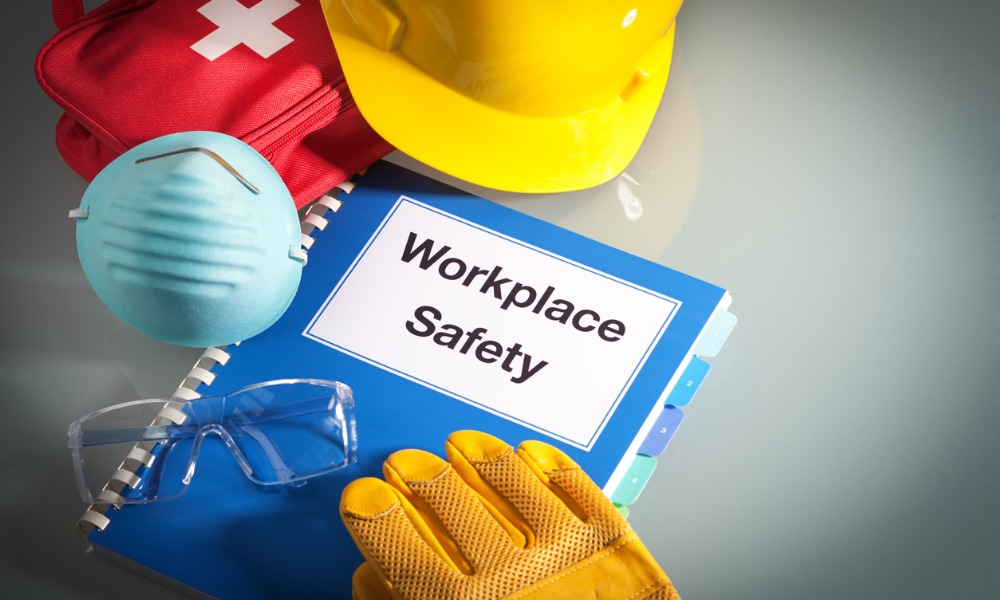How to take advantage of the benefits and best practices offered by WSIB

Understanding the role and importance of the Workplace Safety Insurance Board (WSIB) in Ontario is crucial for both employers and employees. Its primary mission is to assist workers in their recovery and return to work following a workplace injury or illness. This includes not only medical and wage replacement support but also aid for surviving family members in re-entering the workforce or pursuing education.
With the significant economic and personal costs associated with workplace injuries, WSIB, alongside the Occupational Health and Safety Act (OHSA), plays a vital role in reducing these incidents through regulations, training, and partnerships with various organizations. It’s crucial to understand the weaving role WSIB plays in promoting workplace safety, acting as a resource for both employers and employees, whom the organization seeks to benefit most.
Understanding WSIB
The primary goal of the Workplace Safety Insurance Board (WSIB) of Ontario is to help people get back to work after a workplace injury or illness. The organization was formed in 1914 as the Workmen’s Compensation Board and presently receives approximately 250,000 claims annually, paying out over $2.5 billion in benefits. These claims can include paying for medical care and wage replacement. WSIB also assists a surviving spouse and dependant children through the process of re-entering the workforce if necessary or going through post-secondary education.
The importance of occupational safety
In early 2022, Ontario had about 7.4 million employees, with 6.7 million of them falling under provincial jurisdiction. In 2021 alone, there were over 172,000 injury claims from both Schedule 1 employers (covered by collective liability) and Schedule 2 employers (self-insured businesses). These claims encompassed 2,000 critical injuries and 341 fatalities.
As mentioned above, there is a substantial economic and personal cost to these injuries and deaths. Incidents resulting in workplace compensation claims account for billions of dollars within the health care system, as well as many families who are left without a loved one.
The WSIB and OHSA (Occupational Health and Safety Act) work to decrease the incidences of workplace injuries by creating and promoting regulations and proper training so that workers across industries can do their jobs in the safest manner possible.
WSIB's role in promoting workplace safety
The WSIB works with various government and private agencies to provide services to workers and families in need. This includes the International Association of Industrial Accident Boards and Commissions, Ontario’s Ministry of Labour, and a partnership with Fatalities and Immediate Response (FAIR).
Partnerships and programs
WSIB is involved in a number of specific programs with the help of external organizations.
- Through Occupational Health Clinics for Ontario Workers (OHCOW), WSIB provides diagnostic services and educational and informational resources to those with occupational health problems.
- With the Workers Health and Safety Centre (WHSC), WSIB develops training programs and publishes specific health and safety newsletters to provide workers with information and support.
- Injured Worker Outreach Services offers documentation, advice, and education to workers who have been injured or suffered illness in the workplace and their families.
- Finally, Threads of Life helps to support families after a workplace fatality or life-altering injury so that loved ones can try to move forward following significant tragedy.
Benefits of WSIB for employers and employees
Both employers and employees benefit from working with the WSIB through in numerous ways. For businesses, ensuring that your company is compliant with all local regulations and protected from liability will ultimately save you money should someone become sick or injured due to their work. Furthermore, you can leverage WSIB’s resources to reduce incidents by improving employee training on workplace safety. As a result, employees will feel safe and supported in the workplace, which can improve overall morale,
For employees, filing claims with WSIB will get them compensation for lost wages and medical bills, as well as access to rehabilitation services as they recover and other social services.
Best practices for employers to enhance occupational safety
The best way for employers to reduce injury and illness claims from workers is to increase occupational safety. While many workplaces, such as construction sites, which account for the majority of workplace injuries, cannot be made 100% risk-free, there are many ways that you can reduce potential dangers:
- Implementing safety programs and policies. The WSIB and its partners may also have something tailored specifically to your sector.
- Continuously training and educating your employees on best practices when it comes to safety and using dangerous equipment.
- Regularly conducting safety audits and risk assessments, especially if something changes either with the work being completed or the location where it’s being done.
- Encouraging a workplace culture of safety and communication. If employees feel safe going to supervisors about concerns and risks that they notice, these issues can be caught early and act as a preventative measure.
Prioritizing workplace safety
The WSIB is essential in supporting injured workers and their families while promoting safer workplaces across the province. Through extensive partnerships and comprehensive programs, the WSIB not only provides financial assistance and medical care but also fosters a culture of safety and prevention. By leveraging the WSIB’s resources, both employers and employees can benefit from reduced risks, improved training, and a stronger sense of security. Emphasizing occupational safety and open communication within the workplace ultimately leads to a healthier, more productive workforce and a safer environment for all.





